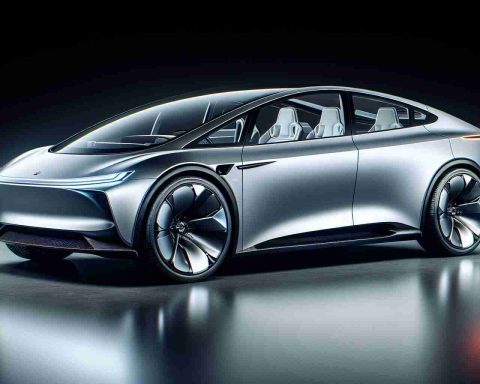Ford’s Off-Road Ambitions Take Center Stage
Ford Motor Company’s vision for the future is ambitious and bold. CEO Jim Farley has announced that the brand aspires to dominate the off-road market, aiming to become “the Porsche of off-road vehicles.” His directive is clear: Ford plans to eliminate dull designs from its lineup.
The second-generation Ranger Raptor is leading the charge with its unmatched capabilities, standing out in a market with little direct competition. Alongside it, the Tremor variant challenges rivals like the Nissan Navara Warriors and Toyota Hilux GR Sport. However, the battle is tougher for the Bronco in the U.S. where it competes against the legendary Jeep Wrangler.
Adding to the excitement is the introduction of the Ford Mustang Mach-E Rally, which merges electric vehicle technology with off-road performance, reminiscent of luxury models like the Porsche 911 Dakar. Ford’s plans stretch into motorsports as well, with executives emphasizing the importance of racing in developing cutting-edge products.
The Ranger Raptor’s success sets the stage for possible future models, such as a fiercely competitive Bronco Raptor and even a Mustang Baja. Ford is committed to creating cars that evoke passion and excitement, steering away from generic designs. With a relentless focus on performance, the next few years promise thrilling advancements from Ford.
Implications of Ford’s Off-Road Strategy
The resurgence of off-road vehicles not only reflects changing consumer preferences but also signifies a larger cultural shift towards adventurous lifestyles. As urban areas continue to expand and outdoor recreational activities gain popularity, automakers like Ford are tapping into a lucrative market that resonates with younger generations eager for experiences that transcend the confines of traditional urban living. The move to dominate this segment could redefine consumer expectations, pushing competitors to innovate or risk obsolescence.
This focus on off-road capabilities can also have profound environmental implications. As the popularity of rugged vehicles grows, manufacturers face increasing scrutiny regarding sustainability practices. The shift towards more environmentally-friendly off-road vehicles, such as electric models like the Ford Mustang Mach-E Rally, emphasizes a potential synergy between performance and ecological responsibility. This transition is critical as off-road enthusiasts often advocate for the preservation of natural landscapes, creating a complex relationship between rugged vehicle culture and environmental conservation.
In terms of the global economy, the trend towards premium off-road vehicles could stimulate economic growth in related sectors, such as outdoor gear, adventure tourism, and even motorsports. As automakers invest in cutting-edge technologies and diversify their portfolios, the implications for job creation and market expansion are significant. Ultimately, Ford’s ambitious plans may inspire a broader industry movement towards more dynamic and purposeful vehicle designs that align with the evolving values of consumers, paving the way for a future where performance and sustainability can coexist.
Ford’s Ambitious Leap into the Off-Road Market: What to Expect
Ford’s Off-Road Ambitions Take Center Stage
Ford Motor Company is making waves in the automotive industry with its bold ambitions to dominate the off-road vehicle market. CEO Jim Farley has proclaimed that the company aims to become “the Porsche of off-road vehicles,” signaling a significant commitment to innovation in design and performance. This article explores the latest developments in Ford’s venture into off-road vehicles, including features, comparisons, limitations, and insights into their future models.
Features of the Ford Off-Road Lineup
1. Ranger Raptor: The standout in Ford’s off-road strategy, the second-generation Ranger Raptor has been engineered for extreme performance. Features include:
– Advanced suspension systems with FOX shocks for enhanced stability and comfort.
– An array of drive modes to tackle various terrains.
– An aggressive aesthetic that reflects its adventurous spirit.
2. Bronco: Competing against the highly regarded Jeep Wrangler, the Bronco offers:
– A modular design allowing for customization and flexibility in performance.
– Off-road technologies such as G.O.A.T. (Goes Over Any Terrain) modes and segment-leading approach angles.
3. Mustang Mach-E Rally: This innovative model combines electric vehicle technology with off-road capabilities, showcasing:
– All-wheel-drive system enhancing traction on rugged surfaces.
– Eco-friendly performance without compromising on power.
Pros and Cons of Ford’s Off-Road Vehicles
Pros:
– High Performance: Models like the Ranger Raptor are built to handle challenging landscapes.
– Technological Integration: Features like enhanced drivetrains and electrification in models like the Mach-E reflect a commitment to modernization.
– Customizability: Ford’s modular systems cater to various consumer preferences for off-road customization.
Cons:
– Market Competition: The Bronco faces stiff competition from established models such as the Jeep Wrangler, which has a strong brand loyalty.
– Pricing: As Ford moves towards premium segments, potential customers may find the pricing of high-end models to be a limiting factor.
Market Trends and Insights
Ford’s focus on the off-road segment aligns with a broader trend where adventurous consumers seek vehicles that can traverse both urban and rugged landscapes. The growth in popularity of outdoor activities has driven demand for capable off-road vehicles, giving Ford a prime opportunity to carve out a significant market share.
Innovations in Ford’s Off-Road Strategy
Ford’s commitment to motorsports is pivotal in developing advanced technologies that can translate to consumer vehicles. The company’s investment in racing will likely yield innovations that enhance performance, safety, and efficiency in off-road applications.
Predictions for the Future
As Ford looks ahead, several exciting possibilities could emerge:
– Bronco Raptor: This anticipated model could redefine off-road capabilities, focusing on extreme adventures.
– Mustang Baja: An innovative crossover between the Mustang’s power and off-road prowess could attract a new audience.
– Increased Electrification: With consumers becoming more environmentally conscious, Ford may expand its electric off-road offerings.
Limitations to Consider
Despite the excitement surrounding Ford’s off-road vehicle lineup, potential buyers should consider:
– Dependability in Extreme Conditions: While these vehicles are built for performance, long-term reliability in extreme off-road scenarios is crucial.
– Weight Concerns: Off-road vehicles tend to be heavier, impacting fuel efficiency, especially for the models equipped with powerful engines.
Conclusion
Ford’s ambitious plans to dominate the off-road vehicle market are unfolding as they continue to innovate and expand their product lineup. With a commitment to performance and a dedication to creating vehicles that inspire excitement, Ford is poised to make significant strides in this competitive segment. As the automotive landscape evolves, all eyes will be on how Ford navigates the challenges and opportunities in off-road adventures.
For more insights and information on Ford’s vehicle lineup, visit Ford’s official site.









